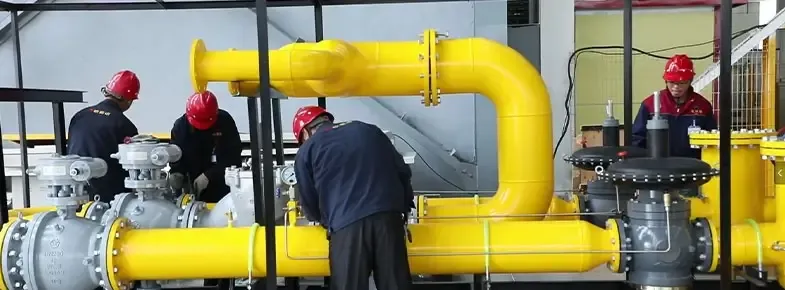
Dec . 11, 2024 09:42
Back to list
مخفض الضغط
Understanding Pressure Reducing Valves A Key Component in Fluid Systems
Pressure reducing valves (PRVs) are essential devices used in various fluid systems to maintain safe and regulated pressure levels. These valves play a crucial role in ensuring the smooth operation of various applications, from residential water supply systems to complex industrial processes. This article delves into the working principles, applications, and advantages of pressure reducing valves.
Working Principle
At its core, a pressure reducing valve is designed to reduce the inlet pressure from a source and maintain a consistent outlet pressure that is lower than the inlet pressure. The primary components of a PRV include a spring-loaded diaphragm or piston, an inlet port, an outlet port, and an adjustment mechanism. When high-pressure fluid enters the valve, the diaphragm or piston moves in response to the pressure differential between the inlet and outlet sides.
As the inlet pressure rises above the setpoint, the diaphragm or piston compresses the spring, which opens the outlet port and allows fluid to escape. Conversely, if the inlet pressure drops, the spring pushes the diaphragm or piston back, closing the outlet port and maintaining the set pressure. This automatic adjustment ensures that the downstream system receives a consistent and safe pressure level, preventing damage or inefficiencies.
Applications
Pressure reducing valves are utilized across a variety of industries and applications
1. Residential Water Supply In homes, PRVs regulate the pressure of incoming municipal water to prevent plumbing damage and ensure appliances such as washers and dishwashers function efficiently.
2. Industrial Processes In factories and plants, PRVs are critical for controlling pressures in steam systems, hydraulic systems, and chemical processing. They help ensure that equipment operates within safe pressure limits, thereby preventing catastrophic failures.
.
4. Fire Protection Systems In fire sprinkler systems, PRVs are vital for maintaining the correct water pressure needed for effective firefighting while preventing water from flowing at dangerously high pressures.
مخفض الضغط

5. Oil and Gas In the oil and gas industry, PRVs protect pipelines and processing equipment from overpressure scenarios that can lead to leaks and environmental hazards.
Advantages of Pressure Reducing Valves
The advantages of utilizing pressure reducing valves are substantial
- Safety By controlling and reducing excessive pressure, PRVs help prevent equipment failure and potential accidents, ensuring both worker safety and environmental protection.
- Efficiency PRVs contribute to improved operational efficiency. By maintaining optimal pressure levels, they reduce the risk of leaks and equipment wear, leading to lower maintenance costs and longer service life.
- Regulatory Compliance Many industries are subject to stringent pressure regulations. Using PRVs helps businesses comply with these standards, avoiding legal repercussions and ensuring quality control.
- Cost-Effectiveness The initial investment in a pressure reducing valve is often offset by savings on energy and water usage, as well as reduced repair and maintenance costs.
- Flexibility PRVs can be adjusted to meet different pressure requirements, making them versatile tools in systems where pressure needs may change over time.
Conclusion
Pressure reducing valves are indispensable devices that maintain and regulate pressure in various fluid systems, ensuring safety and efficiency across multiple applications. Their ability to automatically adjust to changing pressures makes them vital for protecting equipment, improving operational efficiency, and complying with safety regulations. Whether in a residential setting or an industrial environment, PRVs contribute significantly to the integrity and functionality of fluid systems. As technology advances, the development of more sophisticated and reliable PRVs will undoubtedly enhance performance and offer even greater benefits in ensuring safe and efficient fluid management.
Latest news
-
Safety Valve Spring-Loaded Design Overpressure ProtectionNewsJul.25,2025
-
Precision Voltage Regulator AC5 Accuracy Grade PerformanceNewsJul.25,2025
-
Natural Gas Pressure Regulating Skid Industrial Pipeline ApplicationsNewsJul.25,2025
-
Natural Gas Filter Stainless Steel Mesh Element DesignNewsJul.25,2025
-
Gas Pressure Regulator Valve Direct-Acting Spring-Loaded DesignNewsJul.25,2025
-
Decompression Equipment Multi-Stage Heat Exchange System DesignNewsJul.25,2025

